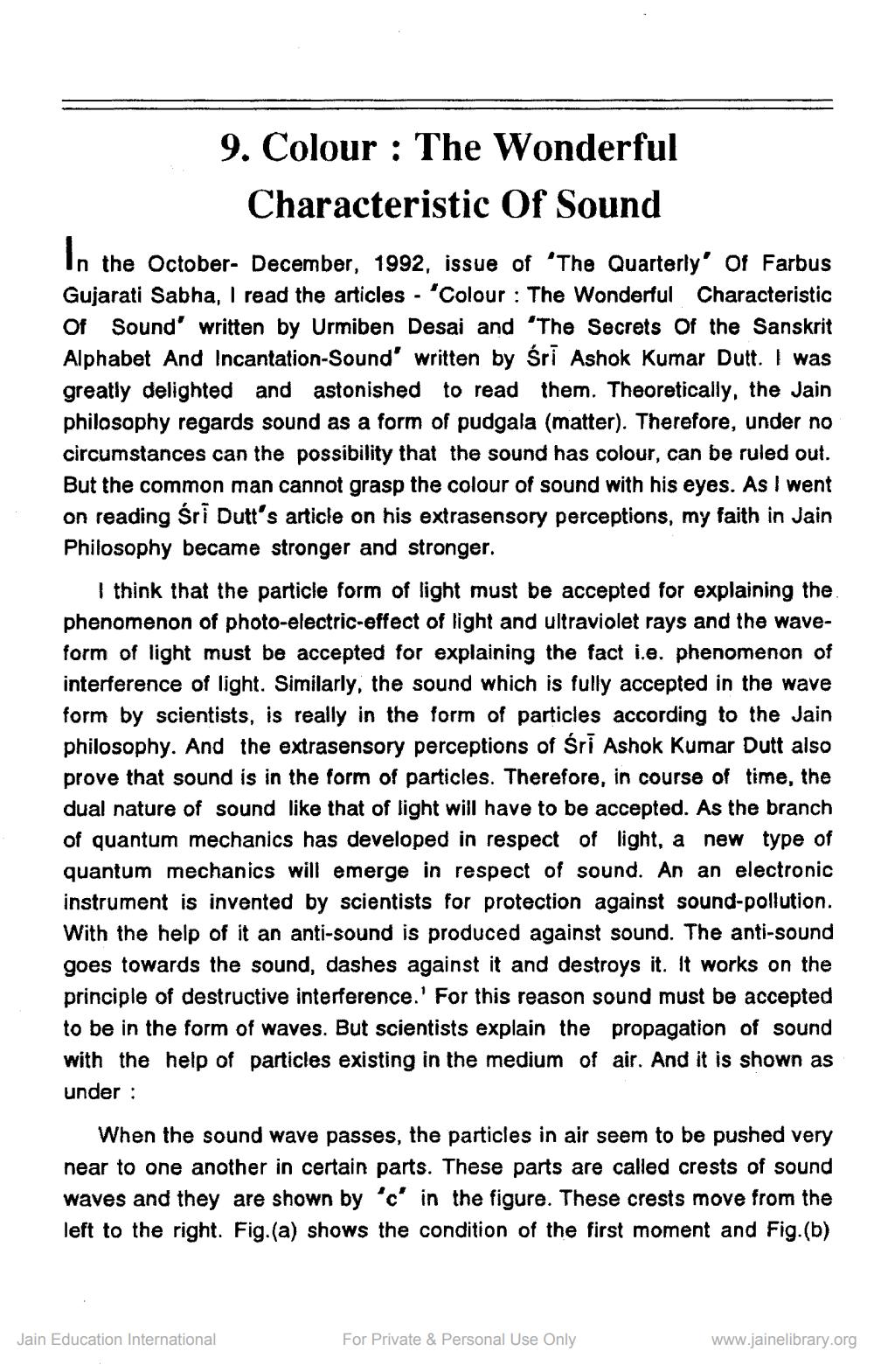________________
9. Colour : The Wonderful
Characteristic Of Sound In the October- December, 1992, issue of 'The Quarterly' of Farbus Gujarati Sabha, I read the articles - "Colour : The Wonderful Characteristic Of Sound' written by Urmiben Desai and 'The Secrets of the Sanskrit Alphabet And Incantation-Sound' written by Sri Ashok Kumar Dutt. I was greatly delighted and astonished to read them. Theoretically, the Jain philosophy regards sound as a form of pudgala (matter). Therefore, under no circumstances can the possibility that the sound has colour, can be ruled out. But the common man cannot grasp the colour of sound with his eyes. As I went on reading sri Dutt's article on his extrasensory perceptions, my faith in Jain Philosophy became stronger and stronger.
I think that the particle form of light must be accepted for explaining the phenomenon of photo-electric-effect of light and ultraviolet rays and the waveform of light must be accepted for explaining the fact i.e. phenomenon of interference of light. Similarly, the sound which is fully accepted in the wave form by scientists, is really in the form of particles according to the Jain philosophy. And the extrasensory perceptions of śri Ashok Kumar Dutt also prove that sound is in the form of particles. Therefore, in course of time, the dual nature of sound like that of light will have to be accepted. As the branch of quantum mechanics has developed in respect of light, a new type of quantum mechanics will emerge in respect of sound. An an electronic
invented by scientists for protection against sound-pollution. With the help of it an anti-sound is produced against sound. The anti-sound
s towards the sound, dashes against it and destroys it. It works on the principle of destructive interference.' For this reason sound must be accepted to be in the form of waves. But scientists explain the propagation of sound with the help of particles existing in the medium of air. And it is shown as under :
When the sound wave passes, the particles in air seem to be pushed very near to one another in certain parts. These parts are called c waves and they are shown by 'c' in the figure. These crests move from the left to the right. Fig. (a) shows the condition of the first moment and Fig. (b)
Jain Education International
For Private & Personal Use Only
www.jainelibrary.org




